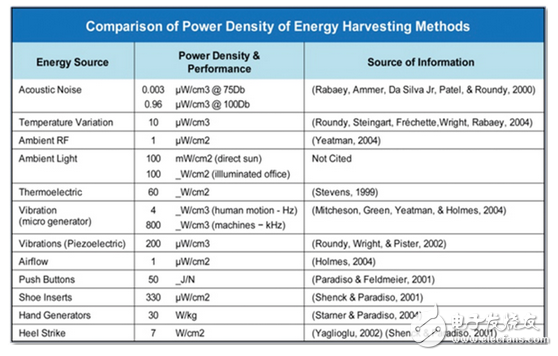
资料下载

射频功率远程传感器
射频功率远程传感器
捕获的能量
最近,在能源收集领域取得了许多进展。许多日常能源,如光、风、温度、振动、无线电波,甚至是PH,都被巧妙地转化为可用能源,使用各种技术(见图1)。挑战在于如何将这些技术产生的微小能量转化为能够发挥有用功能的形式,例如以可靠的方式为环境传感器供电。

图1:能量收集方法的功率密度。(来源:技术研究杂志)
关键是选择收获的来源和组成部分,并仔细分析功率预算。射频能量作为其他采集技术的电源的优点是可以从环境能量中获得,或者通过专用发射机控制。利用射频采集设备可以在几乎任何环境中不受限制的工作。
RF as a power source
RF energy can be harvested from sources such as broadcast TV and radio stations, mobile phones and base stations, and transmitters in unlicensed bands including 915 MHz, 868 MHz, or 2.4 GHz, making RF harvesting commercially viable worldwide. RF enjoys many advantages over other energy sources. It does not depend on the time of day, does not require exposure to heat or wind, and can be moved freely within the range of the transmission source. It can be completely controlled, meaning that the energy can be transmitted continuously, on a scheduled basis or on demand. A rechargeable battery or super capacitor can be utilized to store the converted RF energy for operation during the peak periods.
声明:本文内容及配图由入驻作者撰写或者入驻合作网站授权转载。文章观点仅代表作者本人,不代表电子发烧友网立场。文章及其配图仅供工程师学习之用,如有内容侵权或者其他违规问题,请联系本站处理。 举报投诉
- 相关下载
- 相关文章






